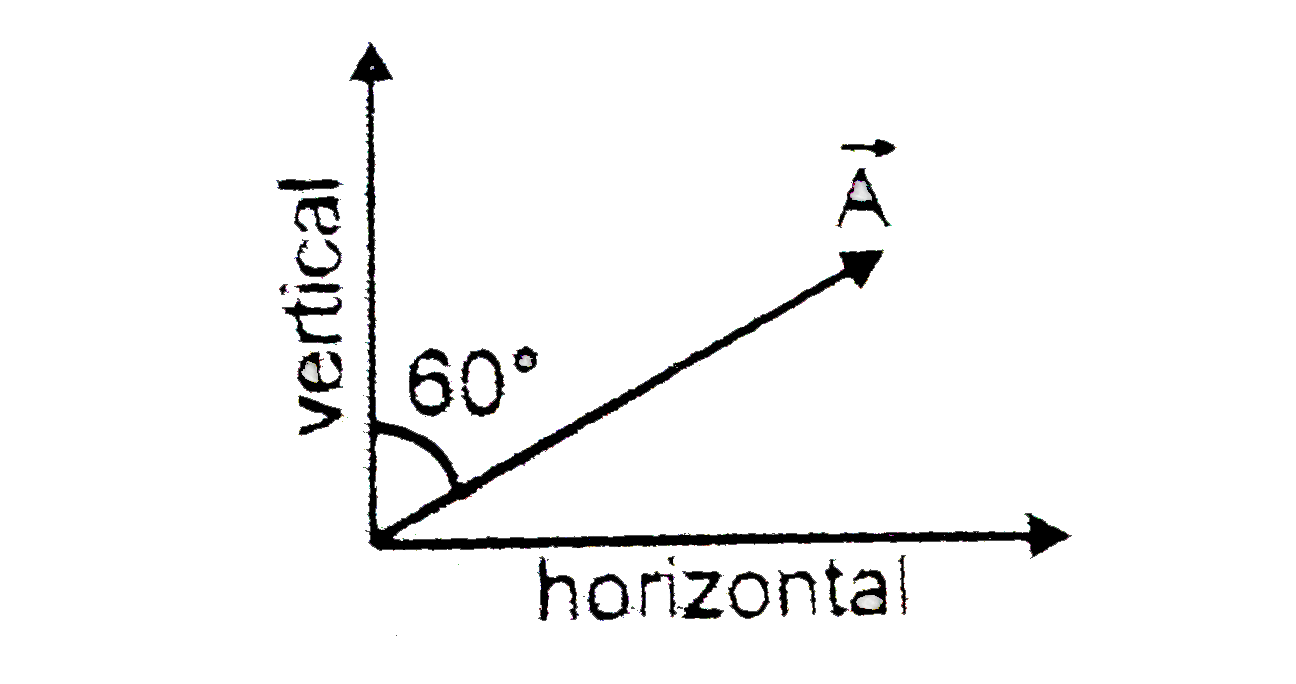A force is inclined at 60∘ to the horizontal. If its rectangular component in the horizontal direction be 50N,find the magnitude of the force and its vertical component.
25 N
75 N
87 N
100 N
The correct Answer is:c
To solve the problem step by step, we will use the concepts of vector components, specifically for a force inclined at an angle.
Step 1: Identify the components of the force
Given:
- The angle of inclination, θ = 60°.
- The horizontal component of the force, FH=50N.
Step 2: Use the relationship between the components and the angle
The horizontal component of the force can be expressed using the cosine of the angle:
FH=Fcos(θ)
Substituting the known values:
50=Fcos(60°)
Step 3: Calculate cos(60°)
We know that:
cos(60°)=12
Substituting this value into the equation:
50=F⋅12
Step 4: Solve for the magnitude of the force F
To find F, multiply both sides by 2:
F=50⋅2=100N
Step 5: Calculate the vertical component of the force
The vertical component of the force can be expressed using the sine of the angle:
FV=Fsin(θ)
Substituting the known values:
FV=100sin(60°)
We know that:
sin(60°)=√32
So,
FV=100⋅√32=50√3N
Final Answers:
- Magnitude of the force F=100N
- Vertical component of the force FV=50√3N
Given:
- The angle of inclination, θ = 60°.
- The horizontal component of the force, FH=50N.
The horizontal component of the force can be expressed using the cosine of the angle:
FH=Fcos(θ)
Substituting the known values:
50=Fcos(60°)
We know that:
cos(60°)=12
Substituting this value into the equation:
50=F⋅12
To find F, multiply both sides by 2:
F=50⋅2=100N
The vertical component of the force can be expressed using the sine of the angle:
FV=Fsin(θ)
Substituting the known values:
FV=100sin(60°)
We know that:
sin(60°)=√32
So,
FV=100⋅√32=50√3N
- Magnitude of the force F=100N
- Vertical component of the force FV=50√3N
Topper's Solved these Questions
- INTRODUCTION TO VECTORS & FORCES BOOK - VMC MODULES ENGLISHCHAPTER - INTRODUCTION TO VECTORS & FORCES EXERCISE - level 2
65 Videos
- INTRODUCTION TO VECTORS & FORCES BOOK - VMC MODULES ENGLISHCHAPTER - INTRODUCTION TO VECTORS & FORCES EXERCISE - JEE Main ( ARCHIVE ) ( LEVEL-1)
12 Videos
- INTRODUCTION TO VECTORS & FORCES BOOK - VMC MODULES ENGLISHCHAPTER - INTRODUCTION TO VECTORS & FORCES EXERCISE - JEE Advanced ( ARCHIVE LEVEL-2)
12 Videos
- GRAVITATIONBOOK - VMC MODULES ENGLISHCHAPTER - GRAVITATIONEXERCISE - JEE Advance (Archive) TRUE/FALSE
1 Video
- JEE MAIN - 5BOOK - VMC MODULES ENGLISHCHAPTER - JEE MAIN - 5EXERCISE - PART I : PHYSICS (SECTION - 2)
5 Videos
Similar Questions
A force is inclined at an angle of 60∘ from the horizontal. If the horizontal component of the force is 40N. Calculate the vertical component.
View SolutionA force is inclined at an angle of 60∘ from the horizontal. If the horizontal component of the force is 4N,calculate the vertical component.
View SolutionA force is inclined at an angle of 60∘ from the horizontal. If the horizontal component of the force is 40N,calculate the vertical component.
View SolutionTwo seconds after projection, a projectile is travelling in a direction inclined at 30∘ to the horizontal. After one more second, it is travelling horizontally. Find the magnitude and direction of its velocity.
View SolutionA force of 4N is inclined at an angle of 60∘ from the vertical. Find out its components along horizontal and vertical directions.

View SolutionA force of 4N is inclined at an angle of 60∘ from the vertical. Find out its components along horizontal and vertical directions.

View SolutionThe vertical component of a force acting at 60∘ to the horizontal is 8.48 N . Find the force and the horizontal component .
View SolutionOne of the two rectangular components of a force is 10 N and it makes an angle 60° with the force. The magnitude of the force is :
View SolutionA body is thrown into air with a velocity 5 m/s making an angle 30∘ with the horizontal .If the vertical component of the velocity is 5 m/s what is the velocity of the body ? Also find the horizontal component .
View SolutionOne of the two rectangular components of a force is 20N and it makes an angle of 30∘ with the force. The magnitude of the other component is
View Solution